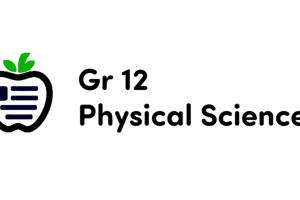Podcast
Questions and Answers
What is the relationship between force and an object's change in velocity?
What is the relationship between force and an object's change in velocity?
- Force has no effect on an object's velocity
- Force only changes an object's direction
- Force only changes an object's speed
- Force can change an object's speed or direction (correct)
According to Newton's first law of motion, what happens to an object in the absence of an unbalanced force?
According to Newton's first law of motion, what happens to an object in the absence of an unbalanced force?
- The object accelerates indefinitely
- The object continues in its state of motion or rest (correct)
- The object changes direction randomly
- The object stops moving immediately
What does it mean to pull an object?
What does it mean to pull an object?
- To apply a force on it in the direction opposite to its motion (correct)
- To apply a force on it in the direction of its motion
- To apply a force on it in any random direction
- To apply a force on it in the same direction as its motion
How is an object's acceleration related to force according to Newton's second law of motion?
How is an object's acceleration related to force according to Newton's second law of motion?
Why is the direction of a force important in determining its effect on an object's motion?
Why is the direction of a force important in determining its effect on an object's motion?
What does it mean if an object is said to be accelerating?
What does it mean if an object is said to be accelerating?
Which law of motion explains the push and pull relationships between objects?
Which law of motion explains the push and pull relationships between objects?
In simple terms, what does it mean to push an object?
In simple terms, what does it mean to push an object?
How do push and pull differ in terms of force application?
How do push and pull differ in terms of force application?
When you push a box across the floor, what force does the box experience?
When you push a box across the floor, what force does the box experience?
How do we describe force when considering its application to objects?
How do we describe force when considering its application to objects?
According to Newton's third law, how do forces always act between objects?
According to Newton's third law, how do forces always act between objects?
Flashcards are hidden until you start studying
Study Notes
Understanding Force Applied to Objects
Force is a fundamental concept in the study of physics, describing the push or pull exerted on an object to change its motion or state. In this article, we'll dive into the subtopics of motion, push, and pull as they relate to the force applied to objects.
Motion
When we talk about force and motion, we're discussing the relationship between force and an object's change in velocity (speed or direction). Newton's first law of motion explains that an object will continue in its state of motion (or rest) unless acted upon by an unbalanced force. Newton's second law of motion, (F = ma), tells us that the force acting on an object is equal to its mass multiplied by its acceleration.
As an object moves, its motion can be characterized by its velocity, which is a vector quantity having both magnitude and direction. The change in its velocity is called an object's acceleration. If the force applied to an object causes its velocity to change, then the object is accelerating, no matter if its velocity is increasing, decreasing, or changing direction.
Push and Pull
In our everyday lives, we often talk about pushing and pulling objects to change their motion. These terms, push and pull, are used to describe the forces exerted on an object. To push an object means to apply a force on it in the same direction as its motion, increasing its velocity or acceleration. To pull an object means to apply a force on it in the direction opposite to its motion, decreasing its velocity or acceleration.
Force is a vector quantity, meaning it has both magnitude and direction. While the magnitude of the force is crucial in determining how much an object will accelerate, the direction of a force is also important in determining its effect on an object's motion.
Newton's Third Law
Newton's third law of motion, also known as the law of action and reaction, states that for every action (force) in nature, there is an equal and opposite reaction (force). This law is often used to explain the push and pull relationships between objects. For example, when you push a box across the floor, the box experiences a force pushing it forward while you experience an equal and opposite force pushing you backward.
Application and Summary
Understanding the concepts of force, motion, push, and pull is crucial to our everyday lives and the study of physics. Whether you're trying to understand why an object moves or trying to change its motion, the fundamental principles of force applied to objects will guide you.
Remember, a force is described by both its magnitude and direction. We describe force as being applied as a push or a pull, depending on the direction of the force relative to the object's velocity. Additionally, Newton's third law ensures that forces always act in pairs, where the force applied to one object by another is always equal and opposite.
By understanding these principles, we can better understand and predict the motion of objects, the forces required to change their motion, and the relationships between moving objects.
Studying That Suits You
Use AI to generate personalized quizzes and flashcards to suit your learning preferences.




